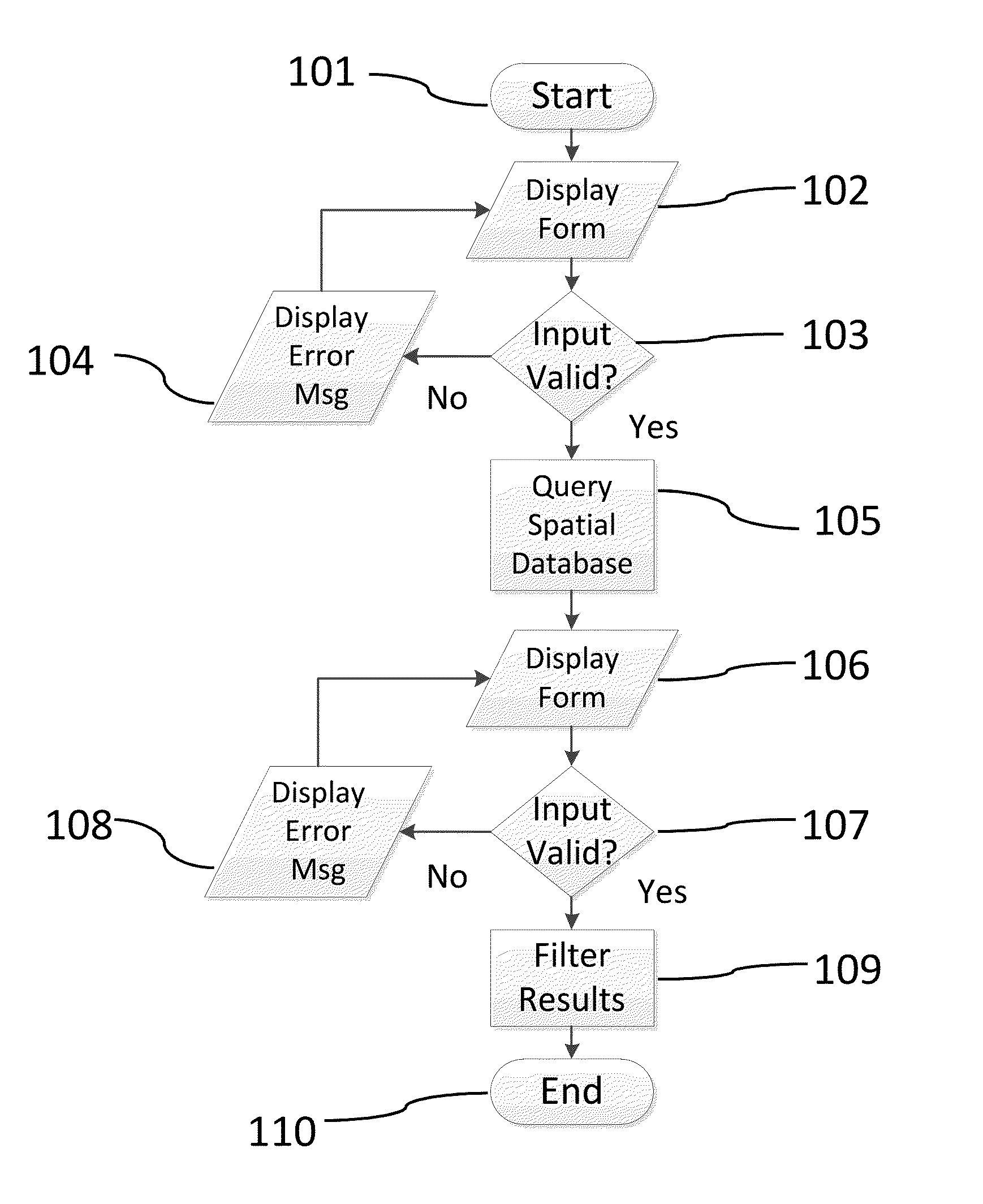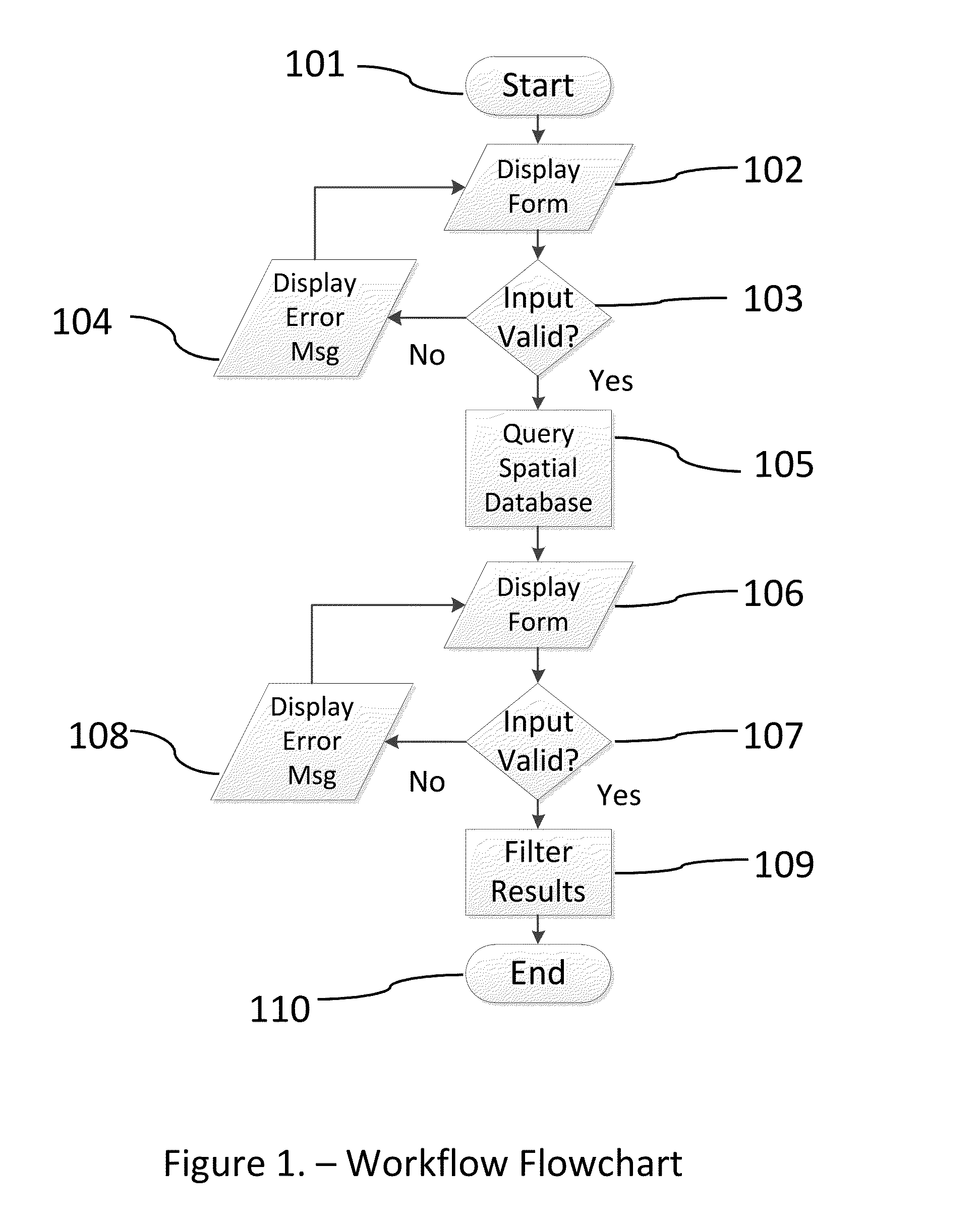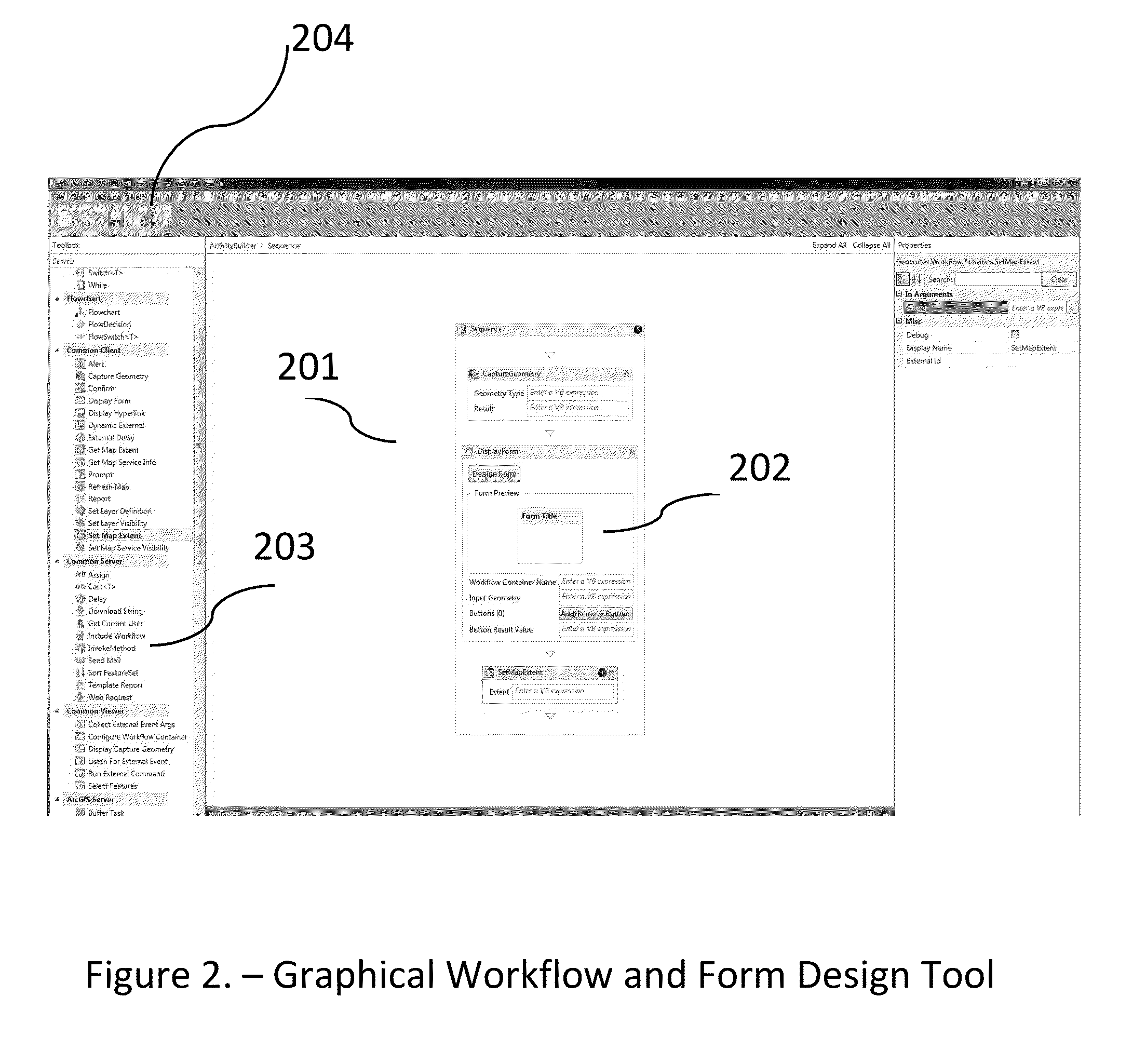Client Agnostic Spatial Workflow Form Definition and Rendering
a client-agnostic, workflow technology, applied in the field of client-agnostic spatial workflow form definition and rendering, can solve the problem of restricting the ability to perform these operations to centralized server systems, and achieve the effect of accelerating productivity and flexibility
- Summary
- Abstract
- Description
- Claims
- Application Information
AI Technical Summary
Benefits of technology
Problems solved by technology
Method used
Image
Examples
Embodiment Construction
[0044]Exemplary embodiments of the invention bring together a number of software and business components in order to realize the best mode for implementation.
[0045]Actors that interact with an exemplary embodiment of the invention fall into several categories. These are the workflow designer, the workflow developer and the workflow user.
[0046]Prior to implementing any software embodiment of the invention, it is the workflow designer's responsibility to design the workflow to closely mimic a real-world, spatial workflow. The designer accomplishes this task by interviewing, researching, observing and documenting one or more spatial workflows. The workflow designer may then elect to document the workflow using a flowchart, as shown in FIG. 1. The purpose of the flowchart is to articulate the spatial workflow in conceptual form to aid implementation, as well as being a mechanism for workflows users to review and validate the workflow designer's assumptions. The workflow described in FIG...
PUM
 Login to View More
Login to View More Abstract
Description
Claims
Application Information
 Login to View More
Login to View More - R&D
- Intellectual Property
- Life Sciences
- Materials
- Tech Scout
- Unparalleled Data Quality
- Higher Quality Content
- 60% Fewer Hallucinations
Browse by: Latest US Patents, China's latest patents, Technical Efficacy Thesaurus, Application Domain, Technology Topic, Popular Technical Reports.
© 2025 PatSnap. All rights reserved.Legal|Privacy policy|Modern Slavery Act Transparency Statement|Sitemap|About US| Contact US: help@patsnap.com



